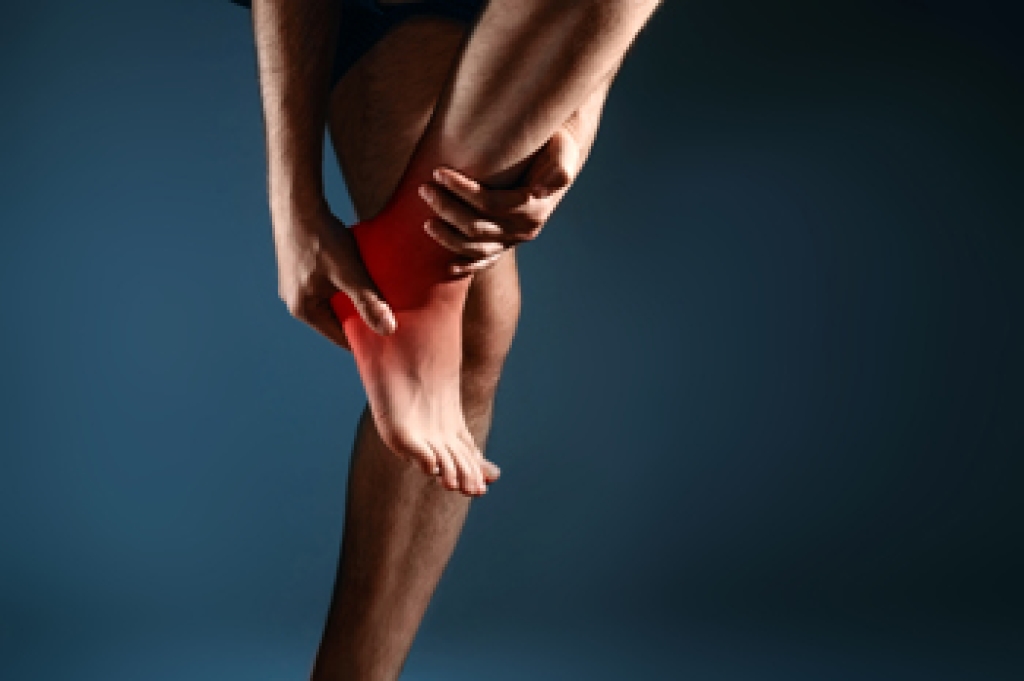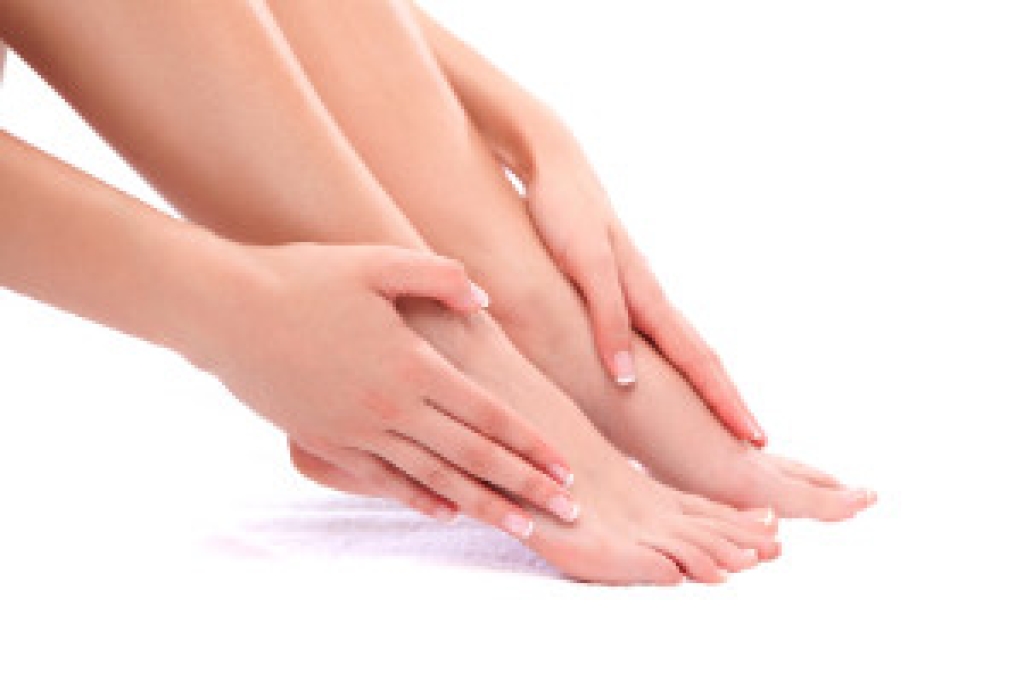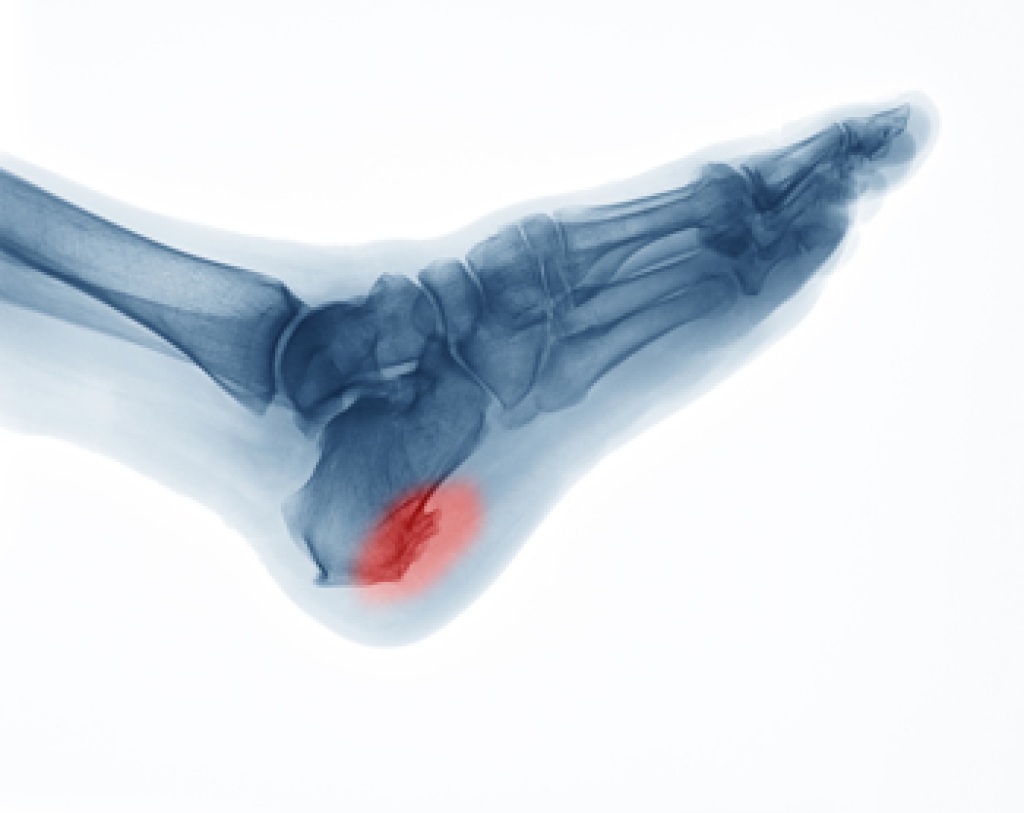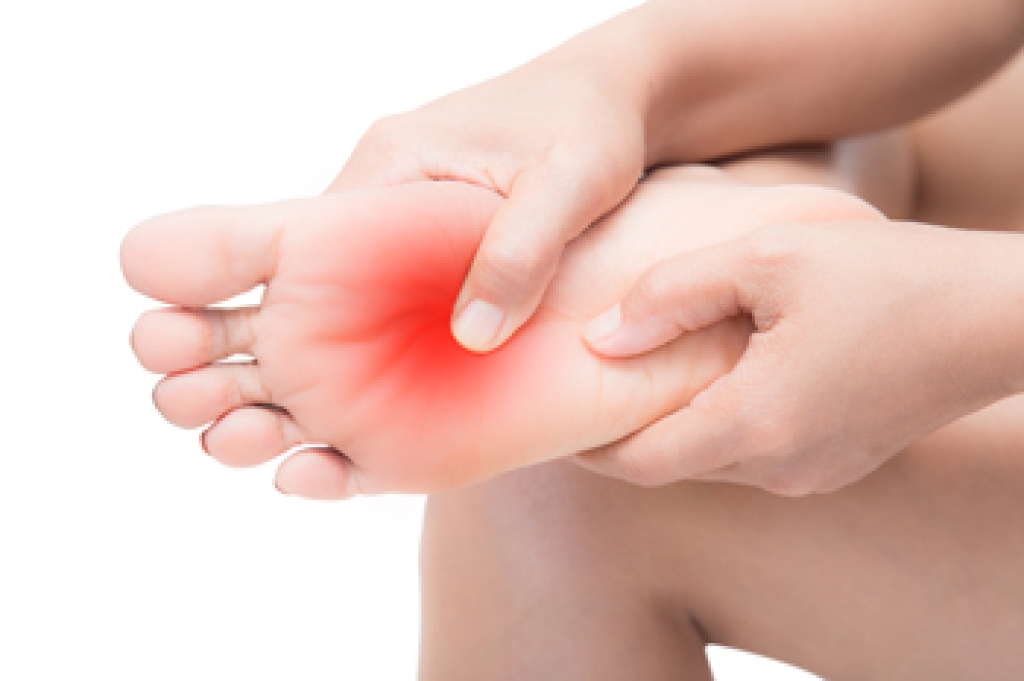Connect With Us
Blog
Blog
Take a Stand Against Foot Pain on the Job
 Jobs that require standing on your feet most of the day can be problematic for your feet. Painful blisters, bunions, plantar warts, sore muscles, and worse conditions can develop if you do not take care of your feet. First and foremost, choose comfortable shoes that fit well, offer adequate arch and heel support, and afford plenty of room in front, and on top, of the toes. Foot orthotics or insoles can also help provide additional cushioning and even improve the way you stand to ease stress on the entire body. Secondly, don’t skip any scheduled breaks; these respites are important to get off of your feet and relieve the strain they’ve been under. Thirdly, strengthening the muscles in your legs with regular exercise, weight lifting, and walking will increase your endurance and help prep your body for prolonged standing. Consult with a podiatrist for more information and guidance on how to prioritize your foot heath while on the job.
Jobs that require standing on your feet most of the day can be problematic for your feet. Painful blisters, bunions, plantar warts, sore muscles, and worse conditions can develop if you do not take care of your feet. First and foremost, choose comfortable shoes that fit well, offer adequate arch and heel support, and afford plenty of room in front, and on top, of the toes. Foot orthotics or insoles can also help provide additional cushioning and even improve the way you stand to ease stress on the entire body. Secondly, don’t skip any scheduled breaks; these respites are important to get off of your feet and relieve the strain they’ve been under. Thirdly, strengthening the muscles in your legs with regular exercise, weight lifting, and walking will increase your endurance and help prep your body for prolonged standing. Consult with a podiatrist for more information and guidance on how to prioritize your foot heath while on the job.
While working on the feet, it is important to take the proper care of them. For more information about working on your feet, contact one of our podiatrists from APEX Foot & Ankle Center. Our doctors will treat your foot and ankle needs.
Working on Your Feet
Standing on your feet for long periods of time can cause stress and pain in your feet. Your whole body may experience change in terms of posture, back pain, bunions, callouses and or plantar warts. There are ways to avoid these conditions with proper foot care, smart choices and correct posture.
Positive Changes
Negative heeled shoe – Choosing this shoe type places the heel slightly lower than the ball of the foot. These are great for overall foot health. Find shoes that fit you correctly.
Go barefoot – Our feet were not designed to be enclosed for all hours of the day. Try to periodically expose your feet to air.
Eliminate Pain
Foot Exercises – Performing simple exercises, incorporating yoga and doing stretches are beneficial. This will allow increased blood flow to the area and muscles of the foot.
Achilles tendon – Stretching the foot out flat on the floor will relax the calf muscles and tendon. These exercises can be performed almost anywhere. Make sure you add these exercises to your daily regimen.
With a little bit of this information and knowing more about foot health, you will notice changes. Foot stretches and proper footwear will help with pain and prevent further issues.
If you have any questions please contact our offices located in Fort Myers, Shellpoint, and Naples, FL . We offer the newest diagnostic and treatment technologies for all your foot and ankle needs.
What Can Cause Cuboid Syndrome?
 The cuboid bones are located in the mid area of the foot and can be affected by a condition known as cuboid syndrome if damaged. This condition can occur due to poor foot structure, which may include flat feet or high arches. Additionally, it can develop following a severe ankle sprain and generally causes pain in the outside of the foot. Patients who have developed cuboid syndrome may find mild relief when the affected foot is elevated, as this often helps to alleviate a portion of the swelling and inflammation. Additionally, it is beneficial to refrain from sporting activities as the healing process occurs. If you have pain in your foot, and believe it may be cuboid syndrome, please consult with a podiatrist as quickly as possible who can offer you correct treatment options.
The cuboid bones are located in the mid area of the foot and can be affected by a condition known as cuboid syndrome if damaged. This condition can occur due to poor foot structure, which may include flat feet or high arches. Additionally, it can develop following a severe ankle sprain and generally causes pain in the outside of the foot. Patients who have developed cuboid syndrome may find mild relief when the affected foot is elevated, as this often helps to alleviate a portion of the swelling and inflammation. Additionally, it is beneficial to refrain from sporting activities as the healing process occurs. If you have pain in your foot, and believe it may be cuboid syndrome, please consult with a podiatrist as quickly as possible who can offer you correct treatment options.
Cuboid syndrome, also known as cuboid subluxation, occurs when the joints and ligaments near the cuboid bone in the foot become torn. If you have cuboid syndrome, consult with one of our podiatrists from APEX Foot & Ankle Center. Our doctors will assess your condition and provide you with quality foot and ankle treatment.
Cuboid syndrome is a common cause of lateral foot pain, which is pain on the outside of the foot. The condition may happen suddenly due to an ankle sprain, or it may develop slowly overtime from repetitive tension through the bone and surrounding structures.
Causes
The most common causes of cuboid syndrome include:
- Injury – The most common cause of this ailment is an ankle sprain.
- Repetitive Strain – Tension placed through the peroneus longus muscle from repetitive activities such as jumping and running may cause excessive traction on the bone causing it to sublux.
- Altered Foot Biomechanics – Most people suffering from cuboid subluxation have flat feet.
Symptoms
A common symptom of cuboid syndrome is pain along the outside of the foot which can be felt in the ankle and toes. This pain may create walking difficulties and may cause those with the condition to walk with a limp.
Diagnosis
Diagnosis of cuboid syndrome is often difficult, and it is often misdiagnosed. X-rays, MRIs and CT scans often fail to properly show the cuboid subluxation. Although there isn’t a specific test used to diagnose cuboid syndrome, your podiatrist will usually check if pain is felt while pressing firmly on the cuboid bone of your foot.
Treatment
Just as the range of causes varies widely, so do treatments. Some more common treatments are ice therapy, rest, exercise, taping, and orthotics.
If you have any questions, please feel free to contact our offices located in Fort Myers, Shellpoint, and Naples, FL . We offer the newest diagnostic and treatment technologies for all your foot care needs.
Painful Heel Spurs
 A common symptom of a heel spur is pain in the heel and surrounding areas. It is defined as a bony growth that forms on the bottom of the heel, and can cause severe pain and discomfort. It often occurs in patients who have plantar fasciitis, which affects the band of tissue that connects the heel to the toes. It can occur as a result of standing on hard surfaces, and walking for the majority of the day. It can be properly diagnosed by having an X-ray taken, which is necessary in determining how severe it is. Mild relief can be found when the affected foot is elevated, and the activity that caused the gradual development of the heel spur is temporarily ceased. If you are afflicted with heel pain, it is suggested that you schedule an appointment with a podiatrist as quickly as possible who can diagnose and treat heel spurs.
A common symptom of a heel spur is pain in the heel and surrounding areas. It is defined as a bony growth that forms on the bottom of the heel, and can cause severe pain and discomfort. It often occurs in patients who have plantar fasciitis, which affects the band of tissue that connects the heel to the toes. It can occur as a result of standing on hard surfaces, and walking for the majority of the day. It can be properly diagnosed by having an X-ray taken, which is necessary in determining how severe it is. Mild relief can be found when the affected foot is elevated, and the activity that caused the gradual development of the heel spur is temporarily ceased. If you are afflicted with heel pain, it is suggested that you schedule an appointment with a podiatrist as quickly as possible who can diagnose and treat heel spurs.
Heel spurs can be incredibly painful and sometimes may make you unable to participate in physical activities. To get medical care for your heel spurs, contact one of our podiatrists from APEX Foot & Ankle Center. Our doctors will do everything possible to treat your condition.
Heels Spurs
Heel spurs are formed by calcium deposits on the back of the foot where the heel is. This can also be caused by small fragments of bone breaking off one section of the foot, attaching onto the back of the foot. Heel spurs can also be bone growth on the back of the foot and may grow in the direction of the arch of the foot.
Older individuals usually suffer from heel spurs and pain sometimes intensifies with age. One of the main condition's spurs are related to is plantar fasciitis.
Pain
The pain associated with spurs is often because of weight placed on the feet. When someone is walking, their entire weight is concentrated on the feet. Bone spurs then have the tendency to affect other bones and tissues around the foot. As the pain continues, the feet will become tender and sensitive over time.
Treatments
There are many ways to treat heel spurs. If one is suffering from heel spurs in conjunction with pain, there are several methods for healing. Medication, surgery, and herbal care are some options.
If you have any questions, please feel free to contact our offices located in Fort Myers, Shellpoint, and Naples, FL . We offer the newest diagnostic and treatment technologies for all your foot care needs.
Can Neuropathy Be Inherited?
 Peripheral neuropathy is the result of nerve damage that occurs in the extremities such as the hands and feet. When this peripheral neuropathy is inherited, it is known as Charcot-Marie-Tooth, or CMT. Charcot-Marie-Tooth affects people worldwide. While CMT is not life threatening, it does lead to the loss of mobility and function in the extremities as the nerves degenerate. There are many different genetic causes for CMT, but most cases have a variety of similar symptoms. These symptoms include having high arched feet, structural foot deformities and weakening of the muscles. Patients who are suffering from CMT should consult with a podiatrist for treatment options that can help improve function. Treatment options may include physical therapy, bracing, wearing properly fitting footwear, and maintaining a healthy weight.
Peripheral neuropathy is the result of nerve damage that occurs in the extremities such as the hands and feet. When this peripheral neuropathy is inherited, it is known as Charcot-Marie-Tooth, or CMT. Charcot-Marie-Tooth affects people worldwide. While CMT is not life threatening, it does lead to the loss of mobility and function in the extremities as the nerves degenerate. There are many different genetic causes for CMT, but most cases have a variety of similar symptoms. These symptoms include having high arched feet, structural foot deformities and weakening of the muscles. Patients who are suffering from CMT should consult with a podiatrist for treatment options that can help improve function. Treatment options may include physical therapy, bracing, wearing properly fitting footwear, and maintaining a healthy weight.
Neuropathy
Neuropathy can be a potentially serious condition, especially if it is left undiagnosed. If you have any concerns that you may be experiencing nerve loss in your feet, consult with one of our podiatrists from APEX Foot & Ankle Center. Our doctors will assess your condition and provide you with quality foot and ankle treatment for neuropathy.
What Is Neuropathy?
Neuropathy is a condition that leads to damage to the nerves in the body. Peripheral neuropathy, or neuropathy that affects your peripheral nervous system, usually occurs in the feet. Neuropathy can be triggered by a number of different causes. Such causes include diabetes, infections, cancers, disorders, and toxic substances.
Symptoms of Neuropathy Include:
- Numbness
- Sensation loss
- Prickling and tingling sensations
- Throbbing, freezing, burning pains
- Muscle weakness
Those with diabetes are at serious risk due to being unable to feel an ulcer on their feet. Diabetics usually also suffer from poor blood circulation. This can lead to the wound not healing, infections occurring, and the limb may have to be amputated.
Treatment
To treat neuropathy in the foot, podiatrists will first diagnose the cause of the neuropathy. Figuring out the underlying cause of the neuropathy will allow the podiatrist to prescribe the best treatment, whether it be caused by diabetes, toxic substance exposure, infection, etc. If the nerve has not died, then it’s possible that sensation may be able to return to the foot.
Pain medication may be issued for pain. Electrical nerve stimulation can be used to stimulate nerves. If the neuropathy is caused from pressure on the nerves, then surgery may be necessary.
If you have any questions, please feel free to contact our offices located in Fort Myers, Shellpoint, and Naples, FL . We offer the newest diagnostic and treatment technologies for all your foot care needs.
Blog Archives
- 2025
- 2024
- 2023
- 2022
- 2021
- 2020
- 2019
- 2018
- 2017

